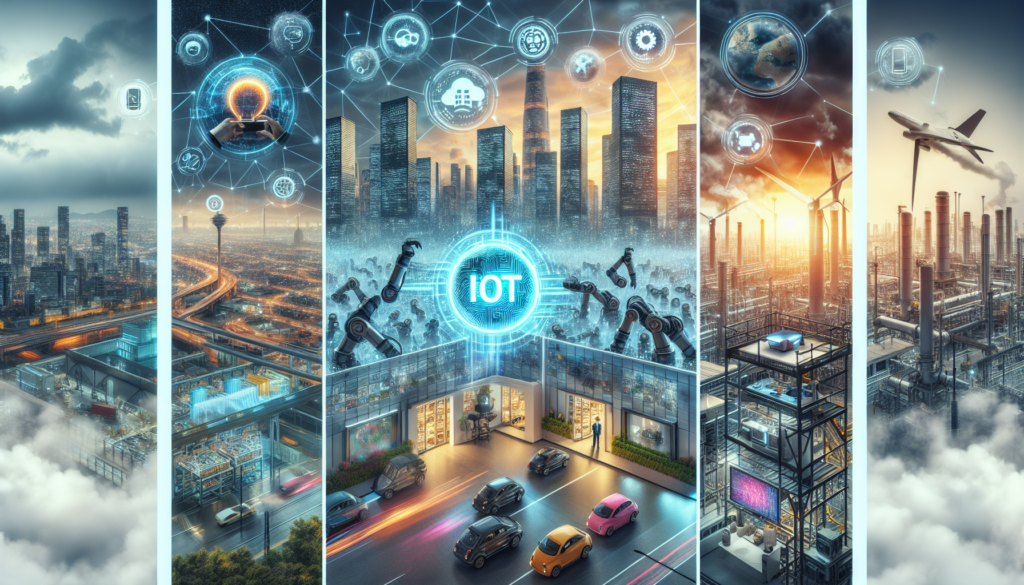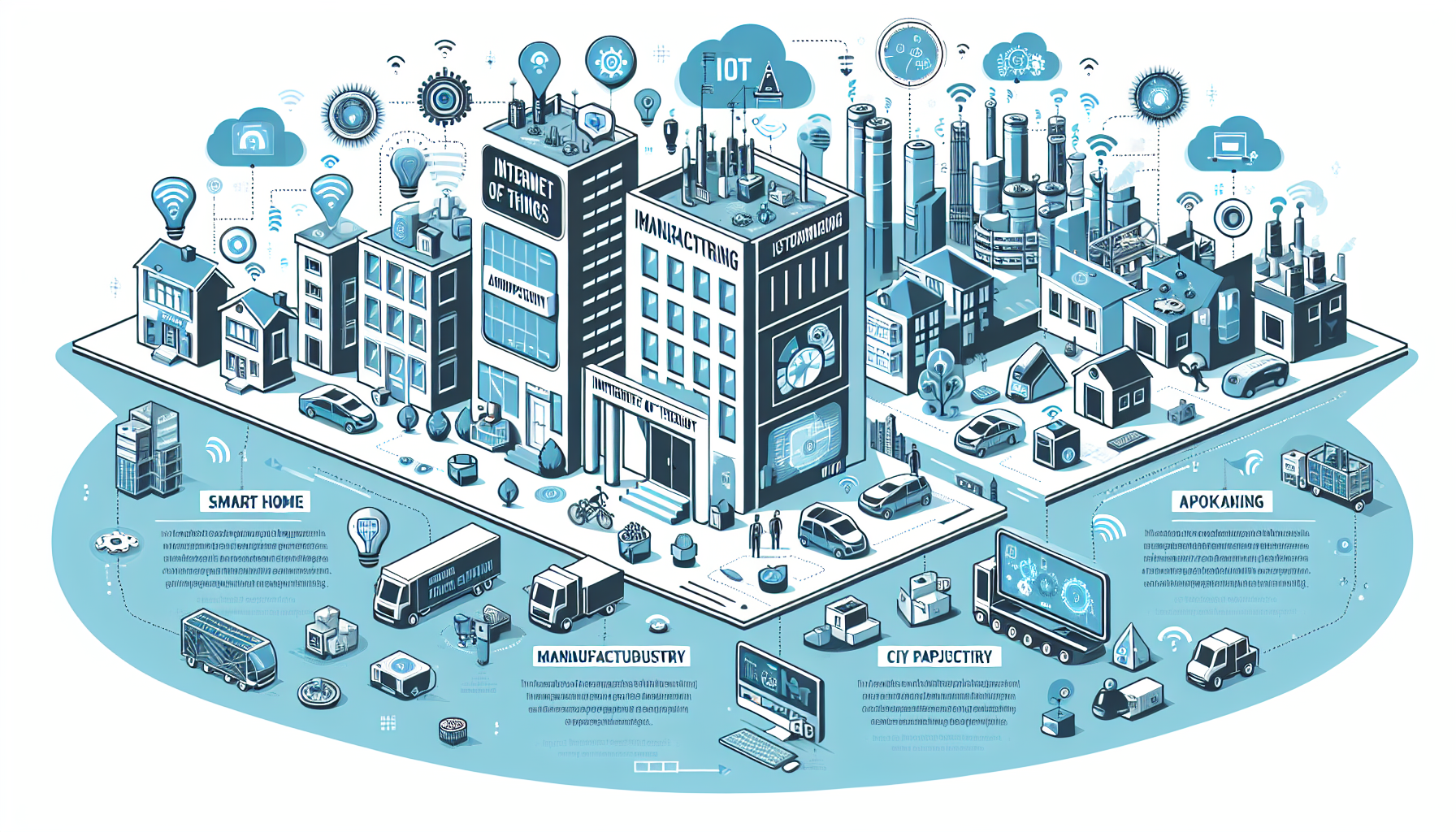Imagine a world where everyday objects are interconnected, communicating with each other seamlessly to make our lives easier and more efficient. This is the exciting concept behind the Internet of Things (IoT). In this article, we will explore three fascinating examples of how the IoT is revolutionizing different aspects of our lives. From smart home devices that can anticipate our needs to wearable technology that enhances our health and fitness, the Internet of Things is dramatically changing the way we interact with the world around us. Get ready to discover the possibilities and be inspired by the incredible potential of IoT technology. The Internet of Things (IoT) is a revolutionary concept that has transformed the way we interact with technology in our daily lives. It refers to the network of interconnected devices or objects that can communicate and exchange data with each other. With the proliferation of IoT, numerous smart devices have emerged, offering convenience, efficiency, and improved functionality in various aspects of our lives. In this article, we will explore some of the most popular categories of IoT devices and delve into three examples within each category.
Smart Home Devices
Smart Thermostat
One of the most well-known IoT devices for the home is the smart thermostat. These intelligent thermostats use sensors to monitor your home’s temperature and adjust it accordingly to ensure optimal comfort and energy efficiency. Smart thermostats can be controlled remotely through smartphone apps, allowing you to adjust the temperature even when you’re away from home. By learning your preferences and analyzing your energy usage, smart thermostats can also provide valuable insights and suggestions for saving energy and reducing utility costs.
Smart Locks
Gone are the days of fumbling with keys or worrying about lost or stolen copies. Smart locks offer a keyless entry system that enables you to lock and unlock your home using a smartphone app or even your voice through a virtual assistant. With features like temporary access codes and remote lock control, smart locks provide enhanced security and convenience. You can grant access to guests without the need for physical keys and receive notifications whenever the lock is engaged or disengaged, giving you peace of mind and control over your home’s security.
Smart Lighting
Intelligent lighting systems are another popular IoT device category for smart homes. These systems allow you to remotely control and automate your home’s lighting, providing convenience, energy savings, and even mood-setting capabilities. With smart lighting, you can schedule lights to turn on and off at specific times, dim them or change their color temperature to create different atmospheres, and even integrate them with other smart devices for enhanced functionality. Whether you’re looking to save energy, enhance home security, or create ambience, smart lighting offers endless possibilities.

Wearable Technology
Fitness Trackers
Fitness trackers have gained significant popularity in recent years due to their ability to monitor and track various aspects of your physical activity. These small devices, typically worn on the wrist, come equipped with sensors that can track steps, distance traveled, calories burned, heart rate, and even sleep patterns. Fitness trackers often sync with mobile apps, allowing you to set goals, track your progress, and receive personalized insights and recommendations. They provide an easy and convenient way to monitor your fitness levels, motivate yourself to stay active, and make positive changes to your lifestyle.
Smartwatches
Smartwatches combine the functionality of a traditional watch with the capabilities of a smartphone. These wearable devices offer a range of features, including notifications for calls, messages, emails, and social media updates, fitness tracking, GPS navigation, music playback, and even mobile payment options. With a smartwatch on your wrist, you can stay connected and informed without needing to constantly check your phone. In addition to their practicality, smartwatches also allow for customization, with various watch faces and interchangeable straps to match your style and preferences.
Health Monitoring Devices
IoT has also greatly impacted the healthcare industry, with the emergence of health monitoring devices that enable individuals to monitor their health in real-time and take proactive measures to maintain or improve it. These devices include smart blood pressure monitors, glucose meters, and ECG monitors, among others. They can securely transmit data to mobile apps or cloud-based platforms, allowing healthcare professionals to remotely monitor patients and provide timely interventions. Health monitoring devices empower individuals to actively engage in their own health management and enhance the efficiency of healthcare systems.

Connected Cars
Telematics
Telematics is the integration of telecommunications and informatics in vehicles to enable various functions and services. IoT-powered telematics systems can provide real-time data on a vehicle’s location, speed, fuel consumption, and more. This information can be utilized for fleet management, insurance purposes, or even personalized driving habits analysis. Telematics can also enable features like GPS navigation, emergency assistance, and vehicle diagnostics, enhancing convenience, safety, and efficiency on the road.
Driver Assistance Systems
Driver assistance systems utilize IoT technology to enhance driver safety and improve overall driving experience. Features such as lane departure warning, adaptive cruise control, and automatic emergency braking can help prevent accidents and reduce driver fatigue. IoT-powered driver assistance systems rely on sensors, cameras, and connectivity to analyze the environment, gather data, and provide real-time alerts or interventions to assist drivers in making safer decisions.
Vehicle Tracking and Diagnostics
IoT-enabled vehicle tracking and diagnostics systems offer a wealth of benefits for both individual vehicle owners and fleet operators. These systems use GPS technology and cellular connectivity to track a vehicle’s location in real-time, monitor its performance, and collect data on various parameters such as fuel consumption, engine health, and maintenance needs. By having access to accurate and up-to-date information, vehicle owners can optimize routing, schedule maintenance more effectively, and ensure the overall health and longevity of their vehicles.
These are just a few examples of the vast array of IoT devices available in each category. Whether it’s bringing intelligence and automation to our homes, revolutionizing our healthcare systems, or enhancing the way we drive, IoT devices have become an integral part of our modern lives. As the technology continues to evolve, we can expect even more innovative solutions that will transform the way we live, work, and interact with the world around us. So, embrace the power of IoT and discover the endless possibilities it offers in making our lives smarter, more efficient, and more connected.
